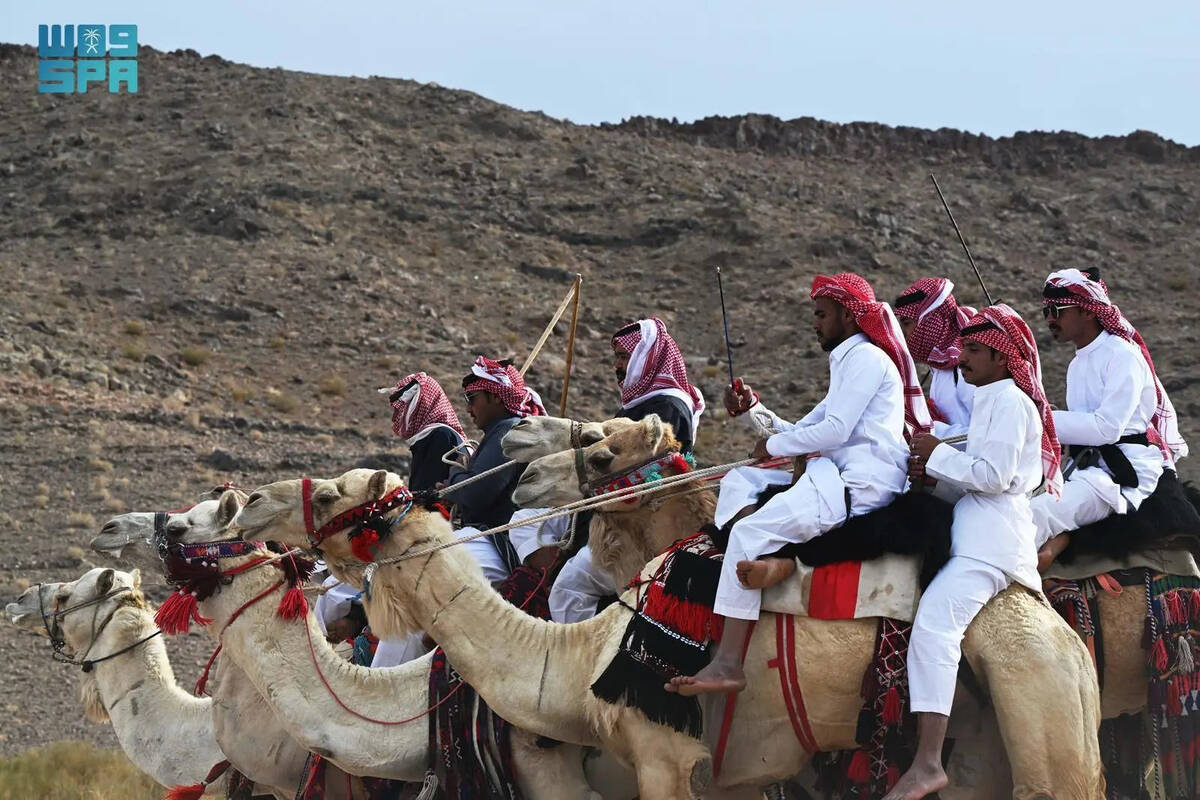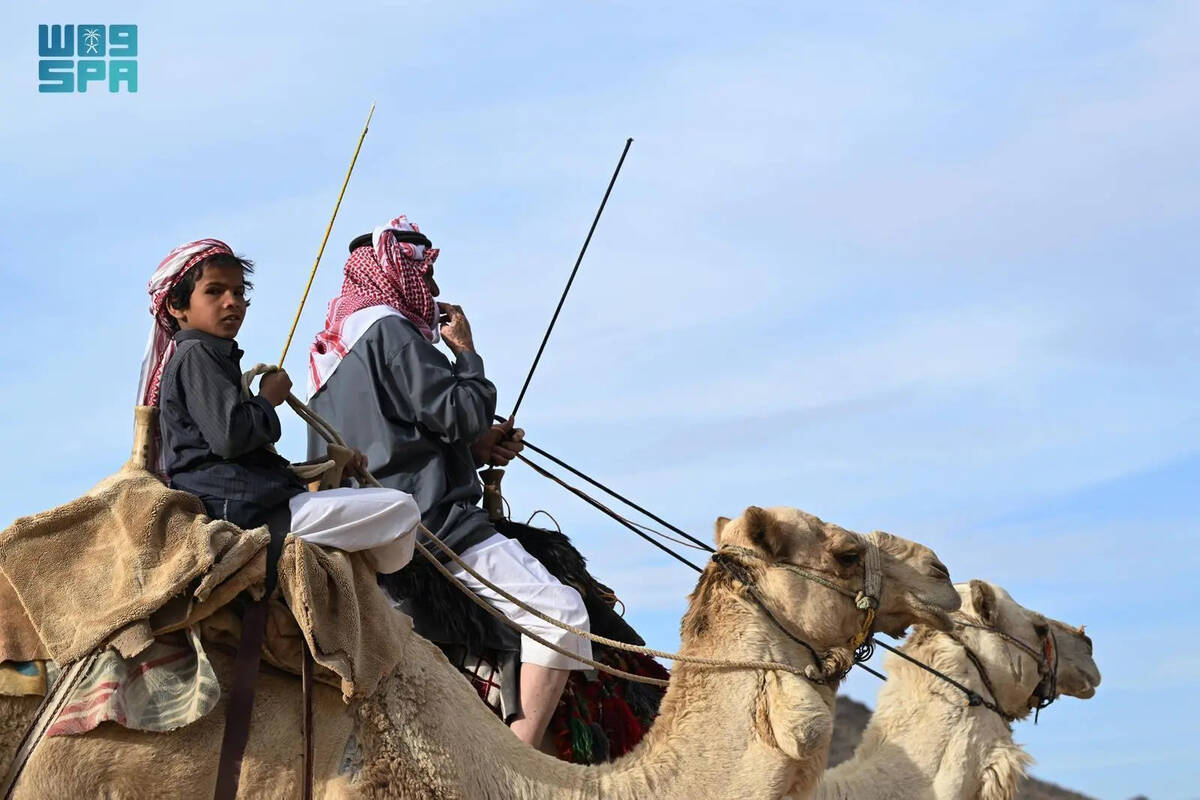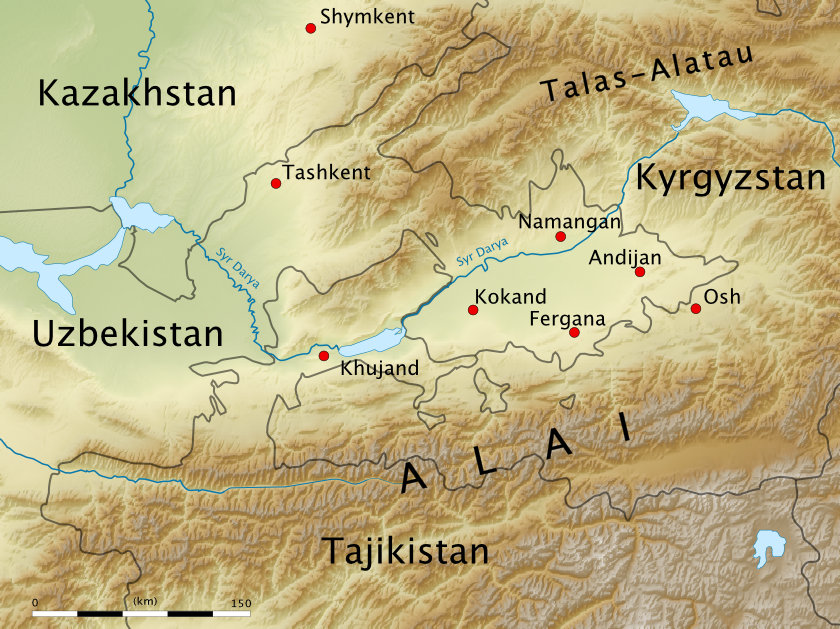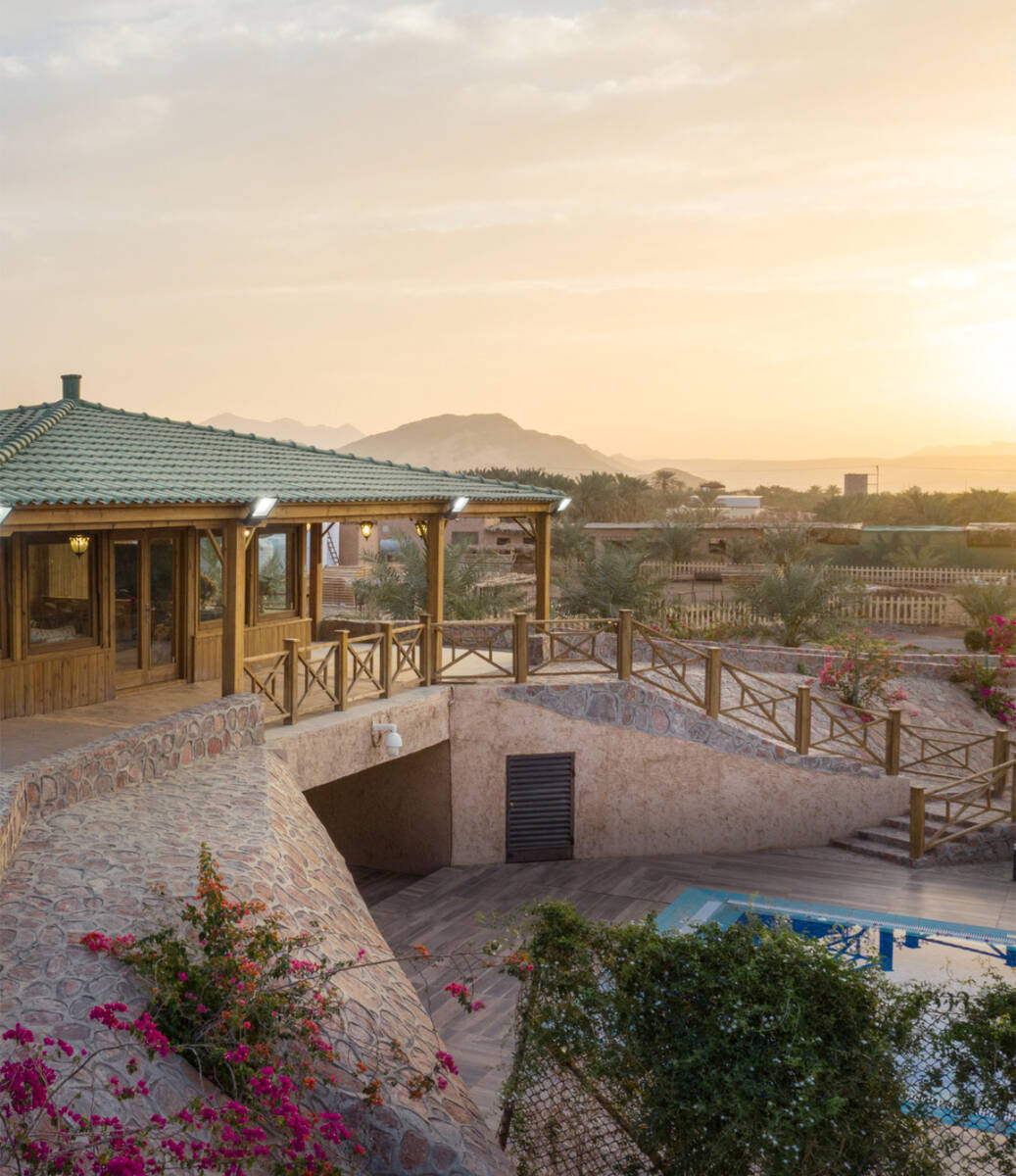RIYADH: In a bid to preserve and celebrate its rich cultural heritage, the Saudi Heritage Commission has cataloged more than 194 archaeological and heritage sites across the Baha region. These sites, including 72 traditional villages, have been classified and labeled with “barcode” plates, as outlined by the Heritage Commission’s data.
In Baha, picturesque scenes unfold as traditional villages and ancient structures dot the landscape, weaving through rugged terrain, vast expanses and diverse climate. These sites stand as testaments to a rich historical legacy, blending tradition, culture and craftsmanship.
Serving as vital components of national identity, the sites showcase a mosaic of cultural and social diversity while contributing significantly to the economy. They have also become magnets for travelers seeking to unearth the secrets of ancient civilizations crafted centuries ago by human hands.
The villages and historical landmarks stand as awe-inspiring testaments to ancient architectural prowess, with their homes, mosques, castles and forts echoing the rich heritage of bygone eras. Utilizing locally sourced materials such as stone, timber and sand, the inhabitants crafted roofs, pillars, doors and walls that seamlessly blend with the natural landscape.
Indigenous trees like juniper, spiny jujube (ziziphus spina christi), acacia and wild olive were skillfully shaped into intricate designs, their surfaces coated with a black tar. As time passed, the hues of these engravings evolved, adding depth and allure to the structures. Moreover, the construction also features granite and basalt rocks, adorned with exquisite marble accents, further enhancing the architectural marvels of the region’s historical sites.
Under the patronage of Prince Hussam bin Saud bin Abdulaziz, the governor of Baha, historic villages and sites in the region are receiving heightened attention and support. Prince Hussam has often emphasized the importance of these cultural riches in conserving the region’s history and contributing to national identity.
In his statements, Prince Hussam emphasizes the rich historical narrative buried in these sites, as well as their significance in communicating the tale of the region’s past and identity. He also highlights the abundance of archaeological and heritage villages scattered throughout the rugged landscapes of Baha, spanning from the highlands to the Tihama sector.
The governor advocates for the meticulous preservation of these villages, calling for collaborative efforts between government bodies, led by the Heritage Commission, and the local community, such as the development initiatives in several heritage villages that have been transformed into vibrant tourist destinations. Notable examples include the Thee Ain archaeological village, Al-Atawlah village, Al-Abadil village and Al-Mousa village.
These revitalized sites have become focal points for national tourism that extend a warm invitation to visitors and residents alike to delve into the rich tapestry of heritage nestled within the heart of Baha.
Mohammed Salem Al-Ghamdi, an elder in the region well versed in the architectural legacy of the area, said: “Since time immemorial, our ancestors have demonstrated a remarkable penchant for constructing stone and mud dwellings in close proximity, their shapes ranging from squares to rectangles or triangles, dictated by the landscape’s contours. These abodes typically feature two stories, with the ground level dedicated to livestock and provisions, while the upper floor serves as living quarters. The maze-like alleys and pathways foster a sense of closeness among residents, nurturing bonds of unity, affection and friendship.”
Al-Ghamdi said that the heritage villages stand as testaments to the resourcefulness of ancient civilizations, despite their limited means.
Moreover, the historic edifices in Baha echo with tales and anecdotes that chronicle pivotal moments in human civilization, serving as invaluable records of cultural evolution. They not only celebrate the region’s rich cultural heritage, but also exemplify the architectural brilliance of bygone eras.
In the picturesque village of Thee Ain nestled in Al-Makhwah, a tale unfolds through its bustling construction, as recounted by Yahya Al-Aref, a native of the village. With a history spanning more than 400 years, Thee Ain contains about 58 ancient stone houses, some intricately carved into the rugged mountainside. Earnestly dubbed the “Marble Village” for its distinctive architecture, these multi-story residences stand as silent witnesses to centuries gone by.
Surrounded by lush palm groves, banana plantations, fragrant basil and citrus trees, Thee Ain emanates an aura of authenticity, weaving together rich heritage, ancient origins and breathtaking aesthetics.
The heritage village of Al-Atawlah holds its own narrative. It is home to the Rubuh Quraish Market and the fortress of the Al-Othman sheikhs, along with the region’s first formal school.
Adjacent, the historic mosque, a centerpiece of the village, is undergoing a revival under Crown Prince Mohammed bin Salman’s initiative aimed at revitalizing historical mosques.
Venturing further, neighboring villages like Al-Khalaf and Al-Khalif unveil their own treasures, and are renowned for ancient Islamic inscriptions etched into basalt stones, including verses from the Qur’an and timeless supplications. Similarly, the cultural tapestry of Al-Mousa and Matair Al-Aish reverberates with echoes of history, each boasting a significant heritage waiting to be discovered.
Amid the heritage villages, a tapestry of historical richness unfolds in the region, showcasing not only quaint settlements, but also a treasure trove of historical sites. One such gem is the palace of Bin Raqoush nestled in Bani Saar, to the north of Baha. Erected in the year 1249 AH, the palace comprises five grand houses, some soaring to three floors, each intricately crafted in a distinctive architectural style.
A symphony of heritage unfolds within, featuring a tribal council chamber, an adjoining mosque, servant quarters, a wellspring of water and an intimate inner courtyard. Two additional houses encircle this palace, collectively forming a harmonious residential complex.
Further enhancing the historical mosaic is the Bakhrush Fortress, positioned in the northwest of the Qura governorate. This ancient citadel, with its soaring walls and twin towers, stands as a sentinel to the region’s storied past.
Meanwhile, the Al-Akhawayn Fortress surveys Al-Malad village with steadfast pride, perched atop a lofty hill and flanked by venerable heritage houses. Adding to this historical tapestry is Al-Ayed Heritage Guesthouse in Bani Kabir village, a haven of heritage museums that narrate the rich history and cultural legacy of the region.
These living artifacts, be they villages or historical sites, find themselves under the watchful eye of relevant authorities, with the commission spearheading efforts to breathe new life into these historical marvels.
Initiating a phased restoration of Thee Ain heritage village, the commission aims to secure its nomination for UNESCO’s prestigious World Heritage list. Simultaneously, significant attention has been directed toward revitalizing the Bin Raqoush Palace and turning it into a vibrant tourist destination.
Central to these endeavors is collaborative engagement with local communities, ensuring that restoration activities align with their needs and aspirations. This inclusive approach serves a dual purpose: Strengthening Saudi cultural identity while fostering a deeper sense of national cultural awareness and safeguarding heritage and social values.
Ali bin Mohammed Al-Suwat, mayor of the Baha region, underscores the region’s commitment to enhancing its heritage sites. This encompasses infrastructural improvements, aesthetic enhancements and the development of access routes. Municipal efforts are concentrated on the rehabilitation and paving of roads leading to these cultural treasures, accompanied by the installation of lighting infrastructure.
These initiatives not only accentuate the charm of heritage villages, but also cater to the region’s tourism and heritage development objectives.
Recent projects have seen pathways in heritage villages adorned with natural stone, covering extensive areas of more than 4,000 square meters. Furthermore, the installation and upkeep of more than 235 lighting poles along the pathways have illuminated the historical sites. Notably, with more than 900 square meters of electrical cables laid, 250 decorative external lighting fixtures have been strategically placed in prominent heritage sites such as the As-Sawad, Al-Hillah and Al-Abadil villages.
Revival of historic sites captures Baha’s timeless charm
https://arab.news/vg6y9
Revival of historic sites captures Baha’s timeless charm

- Serving as vital components of national identity, the sites showcase a mosaic of cultural and social diversity while contributing significantly to the economy
- The villages and historical landmarks stand as awe-inspiring testaments to ancient architectural prowess
Camel riders celebrate Eid traditions in Tabuk’s desert to rhythm of Al-Hijini

- The rhythm of the verses aligns with the camels’ steady stride, creating a harmonious blend of words and motion
- While traditionally performed solo, Al-Hijini often transforms into a communal chant during celebrations such as Eid
TABUK: In the vast desert of Tabuk, Eid carries a unique spirit, a radiant celebration infused with the scent of the land, the memory of ancestors, and deeply rooted traditions passed down with pride across generations.
Here, where the sands stretch endlessly, camel riders known as hajjanah form majestic processions atop their camels, offering greetings to locals while chanting Al-Hijini, a poetic genre that stirs the heart with melodies of pride, love, and loyalty, preserving the soul of the desert.

The Saudi Press Agency documented the vibrant Eid celebrations among the people of Tabuk’s desert, where customs steeped in authenticity and dignity come to life.
These traditions reflect a blend of heritage and contemporary life, rooted in the nomadic rhythm of the desert. Camels, adorned for the occasion, play a central role in the festivities as riders set out across the sands, joyfully chanting traditional verses to mark the holiday.
The Al-Hijini poetic form derives its name from the well-trained camels used for riding and racing. Through Al-Hijini, camel riders recite lyrical verses that encompass various themes of life, often focusing on patriotism and romance. The rhythm of the verses aligns with the camels’ steady stride, creating a harmonious blend of words and motion.

Noted for its simple melodies and brisk tempo, Al-Hijini naturally accompanies travelers and desert caravans, uplifting spirits and easing solitude.
It is deeply tied to Bedouin culture, serving as a medium for expressing emotions, recording daily experiences, relaying wisdom, and preserving ancestral proverbs.
While traditionally performed solo, Al-Hijini often transforms into a communal chant during celebrations such as Eid and national occasions, where collective recitation reflects the unity and solidarity of Tabuk’s desert communities.

Saudi Arabia welcomes Tajik-Kyrgyz-Uzbek border treaty and ‘eternal friendship’ pledge

- Deal formalized the point where the three Central Asian countries’ borders meet in the mountainous Fergana Valley
- Borders in Central Asia were often drawn up under the Soviet Union and never properly demarcated
RIYADH: Saudi Arabia on Tuesday welcomed the border deal forged between Kyrgyzstan, Tajikistan and Uzbekistan on the Fergana Valley, a long-disputed region that has ignited bloody clashes.
In a statement issued by the Saudi Ministry of Foreign Affairs, the Kingdom also congratulated the three Central Asian neighbors for signing a Khujand Declaration on Eternal Friendship, wishing them “continued stability and prosperity.”

Saudi Arabia has maintained deep ties with Central Asian countries, even hosting the GCC Central Asian Investment Forum 2024 in May last year.
The border deal signed on Monday by presidents Emomali Rakhmon of Tajikistan, Shavkat Mirziyoyev of Uzbekistan and Sadyr Japarov Kyrgyzstan, formalized the point where their countries’ borders meet in the mountainous valley.
The densely populated region has been the scene of numerous conflicts — mainly for control of water that is running out in a region badly hit by climate change.
The three leaders met several days before an EU-Central Asia summit in Uzbekistan. Relations between the former Soviet republics, long strained by rivalries, have warmed recently.

Borders in Central Asia were often drawn up under the Soviet Union and never properly demarcated.
But in recent years, Central Asian countries have announced border agreements to regulate the sharing of water, facilitate trade and ensure the stability of this resource-rich region.
In the Tajik city of Khujand, the three presidents also called in similar statements for “reinforcing the cooperation between brotherly nations” — including in energy and transport.
The Tajik and Kyrgyz leaders also inaugurated a section of a joint high-voltage line to supply Pakistan and Afghanistan with energy produced by Central Asian hydroelectric power stations.
The summit follows the signing of border treaties in mid-March between Tajikistan and Kyrgyzstan, and between Kyrgyzstan and Uzbekistan in 2023.
(With AFP)
Trump to visit Saudi Arabia in May, White House confirms

- Trip to Kingdom will be first foreign trip of president’s second term
RIYADH: US President Donald Trump is to visit Saudi Arabia in May, the White House confirmed on Tuesday.
Press secretary Karoline Leavitt said: “The president will be heading to Saudi Arabia in May. As for specific dates and details, we will be reading those out to you as soon as we possibly can.”
The trip to the Kingdom will be the first foreign trip of Trump’s second term as president.
Regarding a potential ceasefire between Russia and Ukraine, Leavitt said that Trump “has made it clear that’s what he wants to see” and “his team remains engaged on it every day.”
Saudi Arabia has hosted talks involving the US and Russia, and the US and Ukraine as Trump facilitates moves toward a ceasefire.
Saudi leadership offers condolences to ruler of Umm Al-Quwain after death of his mother

RIYADH: The leaders of Saudi Arabia offered their condolences to Sheikh Saud bin Rashid Al-Mualla, the ruler of the emirate of Umm Al-Quwain in the UAE, following the death on Monday of his mother, Sheikha Hessa bint Hamid Al-Shamsi.
King Salman and Crown Prince Mohammed bin Salman expressed their heartfelt sympathies along with their prayers that God will grant eternal rest to Sheikha Hessa, as well as solace and strength for her family and loved ones during this time of sorrow.
Authorities in Umm Al-Quwain have declared three days of mourning in her honor.
Madinah Retreats: Culture, spirituality to power up the soul

- Paradigm shift blends wellness practices, cultural expeditions, spiritual experiences
JEDDAH: In the sacred embrace of Madinah, one of Islam’s holiest sites, a new culture-oriented wellness experience is offering a journey that integrates spirituality, culture, and heritage.
The inspiration behind Madinah Retreats stems from founder Moatassem Al-Bitar’s experience in the wellness and spiritual tourism industry in Saudi Arabia and beyond.
Recognizing key gaps in traditional retreat models and leveraging Saudi Arabia’s tourism vision, he envisioned a paradigm shift that blends modern wellness practices, cultural expeditions, and spiritual experiences into a single journey.

With a background as a corporate culture change and people engagement manager, Al-Bitar has curated over 50 retreats across Saudi Arabia, Egypt, and the US, serving more than 400 participants.
His academic training spans diverse fields, including organizational behavior, Islamic spirituality, and intercultural studies.
Officially launched in 2024 after five years in the making, the initiative held its second retreat, under the theme “The Arrival,” earlier this year in Madinah.
FASTFACTS
• Madinah Retreats stems from founder Moatassem Al-Bitar’s experience in the wellness and spiritual tourism industry in Saudi Arabia and beyond.
• It blends modern wellness practices, cultural expeditions, and spiritual experiences into a single journey.
Al-Bitar told Arab News: “Every retreat we design starts with clear intentions and objectives, supplemented by a story and a theme that aligns with a particular destination.”
The retreats feature a collective of facilitators who work together toward a unified intention, ensuring a balanced and immersive experience.
“One of our main goals is to promote different destinations in Saudi Arabia that are perfectly ideal for wellness-centric experiences, in addition to its unmatched culturally enriching character,” Al-Bitar said.
“We seek to partner with pertinent governmental initiatives and entities that fulfill the Kingdom’s Vision 2030 for wellness tourism and exceptional experiences.”
Al-Bitar explained that each retreat is meticulously structured around three core pillars: spirituality (meditative practices and inner reflection); culture (heritage site visits, traditional storytelling, and local experiences); and wellness (movement–based practices, mindfulness exercises, and healing foods).
By integrating these elements into daily programs, Madinah Retreats offers a journey tailored to the needs of participants and is a “philosophy of being rooted, real, and rich.”
The retreats target individuals and groups seeking genuine transformation in their well-being, spiritual connection, and cultural enrichment. They provide a safe and accepting space where participants are respected on their unique paths to healing.
Madinah, which is the spiritual capital of Islam, is popularly known as the Illuminated City. It offers an atmosphere of peace and rejuvenation, and its diverse topography and climate make it ideal for nature-based healing.
“Madinah is widely recognized as a destination where the heart feels at peace, the body feels rejuvenated, the mind feels clarity and the soul feels enriched,” said Al-Bitar. “The city’s rapid development and recognition as a top global tourism destination further enhance its appeal.”
The Madinah Retreats experience is usually hosted in a traditional farm resort surrounded by nature. Participants visit cultural and historic sites, explore the city’s vibrant social scene, and experience local cuisine, contemporary art, and community traditions.
“During the retreat we offer meditation, breathwork, self-reflection, yoga, tai chi, and other somatic therapies, creative expression as a healing tool, as well as locally sourced, nourishing meals,” Al-Bitar added.
The somatic practices guided by expert facilitators enhance body awareness and overall well-being.
Al-Bitar said: “Connecting with nature and animals has proven therapeutic benefits. Madinah Retreats incorporates nature-based and equine therapy to help participants reconnect with their original disposition, providing an irreplaceable form of healing.”
Cultural storytelling is also an essential component, allowing participants to explore the hidden wisdom of each landmark and understand local traditions and historic practices.
No prior experience in meditation or wellness practices is required, making the retreats accessible to all.
Honoring his Egyptian roots, Al-Bitar is expanding the retreats to Siwa, Egypt.
Siwa Oasis, nestled within a breathtaking desert landscape, is characterized by vast dunes, striking limestone outcrops, and distinctive geomorphological features that enhance its appeal as a tourist destination.
“The expansion to Siwa, Egypt, was inspired by the oasis’ 160-year-old tradition of reconciliation — Eid El-Solh, a celebration of harmony,” Al-Bitar said.
“Siwa’s natural healing elements, such as salt lakes, hot springs, and lush landscapes, mirror many of Madinah’s restorative qualities.”
Al-Bitar said that Madinah Retreats will also explore the Kingdom’s hidden gems by hosting retreats in Abha, Aseer, Al-Ahsa, and other locations rich in healing nature and cultural heritage.
Retreat prices range from SR5,000 ($1,333) to SR10,000, depending on the location, program, facilitators, transportation, and accommodation.
Madinah Retreats follows a collaborative model, partnering with local service providers, facilitators, and experts to provide an experience that remains true to the cultural essence of each destination.
Al-Bitar said: “Our content caters to people from different backgrounds, both English and Arabic speakers. Our agenda is characterized by being spacious and offers ample time for self-guided practices. Our way of delivery is strictly non-intrusive.”
Participants leave Madinah Retreats feeling “transformed, enriched, and connected to their most authentic selves.”
Al-Bitar said that the experience embodied the profound wisdom: “You presume you are a small entity, but within you is enfolded the entire universe.”
Madinah Retreats also provides a customized retreat model that caters to corporations and teams, as well as add-on visits such as expeditions in AlUla.


























